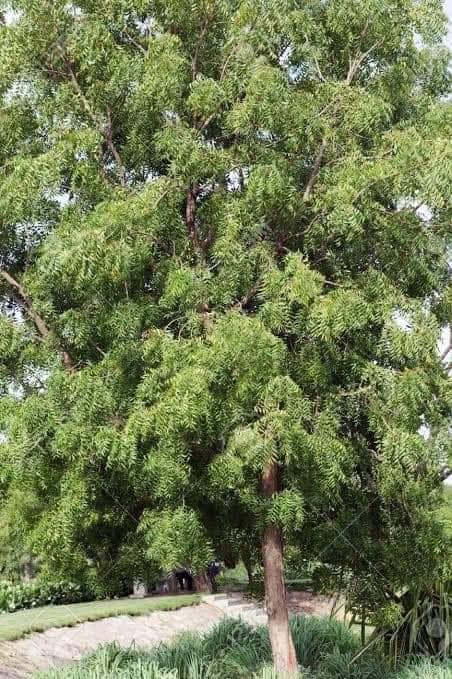As urban landscapes expand and pollution levels rise, the importance of green spaces and trees for purifying the air becomes increasingly evident. Trees play a crucial role in filtering pollutants, releasing oxygen, and creating a healthier environment. In this blog post, we explore the Top 10 Air Purifying Trees in India, highlighting their remarkable ability to enhance air quality.
Neem (Azadirachta indica):

Neem trees are not only revered for their medicinal properties but also their air-purifying abilities. They help remove pollutants like sulfur dioxide and nitrogen dioxide.
These evergreen trees thrive in various climates in India and require relatively low maintenance.
Read More: 10 Most Oxygen Producing Trees in India
Bamboo (Bambusoideae):
Bamboo, with its rapid growth and dense foliage, is effective at absorbing pollutants like benzene and formaldehyde.
Widely adaptable to different soil conditions, bamboo provides not only air purification but also a versatile and eco-friendly resource.
Peepal (Ficus religiosa):
The Peepal tree, considered sacred in many cultures, is an excellent air purifier. It helps filter out pollutants like ammonia and sulfur dioxide.
The Peepal tree thrives in diverse climates and is often present in both urban and rural areas across India.
Read More: 10 Unusual Trees Found Around The World
Banyan (Ficus benghalensis):
Similar to the Peepal tree, the Banyan tree is revered for its cultural significance and air-purifying qualities. It helps combat pollutants like formaldehyde and benzene.
With its expansive canopy, the Banyan provides shade and contributes to the overall well-being of its surroundings.
Ashoka (Saraca asoca):
The Ashoka tree, known for its ornamental value, is also an effective air purifier. It helps remove pollutants like carbon monoxide and sulfur dioxide.
Often planted for its aesthetic appeal, the Ashoka tree thrives in subtropical climates.
Read More: Top 10 Fastest-Growing Trees in India
Tulsi (Ocimum tenuiflorum):
Also known as Holy Basil, the Tulsi plant is not only a revered herb but also a natural air purifier. It helps eliminate pollutants like carbon dioxide and carbon monoxide.
Tulsi is often planted in gardens or near homes for its cultural significance and medicinal properties.
Mango (Mangifera indica):
People value the Mango tree not only for its fruits, which symbolize abundance but also for its ability to purify the air. It helps filter out pollutants like sulfur dioxide and nitrogen oxides.
Commonly found across India, the Mango tree thrives in tropical climates.
Jamun (Syzygium cumini):
The Jamun tree, known for its delicious berries, is also an effective air purifier. It helps remove pollutants like benzene and formaldehyde.
Thriving in subtropical regions, the Jamun tree contributes to both air quality and biodiversity.
Amla (Phyllanthus emblica):
People celebrate the Amla tree, also known as Indian Gooseberry, for its health benefits and its ability to purify the air. It helps combat pollutants like ammonia and sulfur dioxide.
Amla trees are often cultivated in home gardens and are well-suited to diverse climates in India.
Read More: Top 8 Fast-Growing Trees in India
Moringa (Moringa oleifera):
People value the Moringa tree, often called the Drumstick tree, for its nutritional properties and its ability to purify the air. It helps filter out pollutants like nitrogen oxides.
Thriving in arid and semi-arid regions, Moringa is a hardy tree with significant environmental benefits.
Conclusion:
Incorporating these air-purifying trees into urban and rural landscapes can contribute significantly to improving air quality across India. Beyond their environmental impact, these trees also bring cultural, aesthetic, and ecological value to the diverse regions they inhabit. By planting and preserving these trees, we can collectively work towards a greener, healthier future for the subcontinent.
